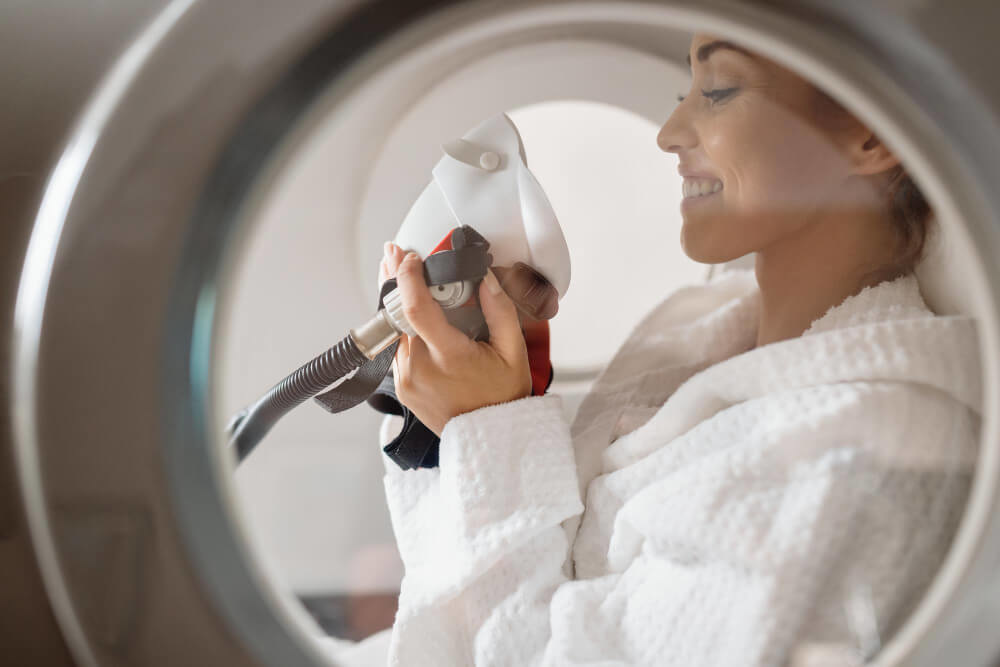The Future of Healing: A Guide to Regenerative Medicine
Imagine a form of medicine that doesn’t just mask symptoms but works to repair the root cause of injury and disease. Picture a future where your own body provides the tools needed to mend damaged joints, rejuvenate aging skin, and potentially reverse chronic conditions. This isn’t science fiction; it’s the rapidly advancing reality of regenerative medicine.
This groundbreaking field represents a fundamental shift in healthcare, moving away from management and towards restoration. It harnesses the body’s innate capacity for self-repair, amplifying these natural processes to heal tissues and organs. The core promise of regenerative medicine is to unlock this potential, offering new hope and innovative solutions for a wide range of health challenges.
Unlike traditional approaches that might rely on surgery or pharmaceuticals to manage a condition, regenerative therapies aim to rebuild what has been lost. It’s a proactive, personalized approach that could redefine how we think about aging, injury, and long-term wellness for generations to come.

What is the fundamental goal of regenerative medicine?
The primary objective of this medical discipline is elegantly simple yet profound: to repair, replace, or regenerate human cells, tissues, or organs to restore normal function. It seeks to resolve the underlying cause of a problem rather than just alleviating the pain or dysfunction it creates. This represents a paradigm shift from the conventional ‘disease and symptom management’ model of care.
Think of a crumbling brick wall. Traditional medicine might patch the holes or paint over the cracks to make it look better temporarily. Regenerative medicine, in contrast, aims to supply new, healthy bricks and mortar to rebuild the wall from its foundation, making it strong and functional once more.
This approach is rooted in understanding and leveraging the body’s own sophisticated healing toolkit. Our bodies are constantly repairing minor damages, but significant injuries or degenerative diseases can overwhelm these systems. Regenerative therapies act as a powerful catalyst, providing the necessary components and signals to stimulate a more robust and complete healing response.
The ultimate vision is to find ways to cure conditions previously considered untreatable. By focusing on restoration, the field opens up possibilities for not just improved health but enhanced longevity and a higher quality of life, free from the limitations of chronic ailments.

What are the main types of regenerative therapies?
Regenerative medicine is not a single treatment but a broad field encompassing several innovative techniques. Each therapy utilizes different biological mechanisms to encourage healing, and they are often selected based on the specific condition and the individual patient’s needs. These tools form the foundation of this exciting area of healthcare.

How do stem cells work in healing?
Stem cells are perhaps the most well-known component of regenerative medicine. They are the body’s raw materials, remarkable cells from which all other specialized cells are generated. Under the right conditions, a stem cell can divide to form more stem cells or become a specialized cell, such as a muscle cell, a brain cell, or a cartilage cell.
This unique ability makes them incredibly valuable for repair. When introduced to a damaged area, stem cells can potentially differentiate into the needed cell type to replace what was lost. More importantly, they act as powerful signaling hubs, releasing growth factors and anti-inflammatory proteins that orchestrate the body’s local healing response.
They essentially act as the ‘general contractors’ at a construction site, directing other cells to do their jobs, reducing inflammation, and promoting the growth of new blood vessels. This multifaceted action is what makes stem cell therapy a promising avenue for treating everything from arthritic joints to certain neurological conditions.
There are different sources of stem cells, including those derived from a patient’s own bone marrow or fat tissue, known as adult stem cells. These are the most commonly used in clinical practice today, as they avoid many of the ethical debates surrounding other types and carry a low risk of rejection.

What is Platelet-Rich Plasma (PRP) therapy?
Platelet-Rich Plasma, or PRP, is another cornerstone of regenerative treatment that utilizes the patient’s own blood. Our blood is composed of red cells, white cells, plasma, and platelets. While known for their clotting ability, platelets are also rich reservoirs of hundreds of growth factors and healing proteins.
PRP therapy involves a simple process. A small amount of blood is drawn from the patient, similar to a routine blood test. This blood is then placed in a centrifuge, a machine that spins at high speed to separate the components. This process concentrates the platelets in a small volume of plasma.
This resulting ‘liquid gold’, the platelet-rich plasma, is then carefully injected back into the patient at the site of injury or concern. Once there, the concentrated growth factors are released, jumpstarting the repair cascade. They can accelerate tissue regeneration, reduce inflammation, and stimulate the formation of new collagen, making PRP popular for orthopedic injuries, hair restoration, and skin rejuvenation.

What about other biologics like amniotic fluid and cord tissue?
Beyond a patient’s own cells and platelets, the field also utilizes other powerful biologics sourced from birth tissues, such as amniotic fluid and umbilical cord tissue. These materials, which are donated after healthy, full-term births, are exceptionally rich in a complex cocktail of growth factors, cytokines, hyaluronic acid, and other proteins that support healing and reduce inflammation.
These products are not considered stem cell therapies in the traditional sense, as the cells within them are non-living after processing. Instead, they function as powerful scaffolds and signaling agents. When injected into an injured area, they create an ideal environment for the body’s own repair cells to work more effectively.
They provide structural support, lubrication for joints, and a sustained release of anti-inflammatory and regenerative signals. This makes them a valuable option for treating conditions like osteoarthritis and soft tissue injuries, where creating a supportive healing milieu is just as important as stimulating new cell growth. The ethical and safe acquisition of these materials is paramount for patient safety.

How does tissue engineering fit into this field?
Tissue engineering is one of the most futuristic and ambitious branches of regenerative medicine. It combines cells, engineering, and material sciences to improve or replace biological tissues. The goal is to construct functional tissues and even entire organs in the laboratory for implantation.
This process typically involves three main components: cells, a scaffold, and growth factors. Scientists often use a patient’s own cells, which are ‘seeded’ onto a biocompatible scaffold. This scaffold acts as a template, providing the shape and structure for the new tissue to grow upon.
Growth factors and other signaling molecules are then added to coax the cells into developing into the desired tissue type, whether it’s skin, cartilage, or a section of a blood vessel. Over time, the cells multiply and organize, and the scaffold may be designed to safely dissolve, leaving only the newly generated tissue behind. While growing complex organs like a heart or liver is still a long-term goal, simpler tissues like skin grafts and cartilage are already a clinical reality.

What conditions can regenerative medicine help with?
The potential applications of regenerative medicine are vast and continue to expand as research progresses. Its principles can be applied to nearly any area of the body where damage or degeneration has occurred. Currently, its most common and successful uses are concentrated in a few key areas of healthcare.
One of the largest fields is orthopedics. Patients suffering from chronic joint pain due to osteoarthritis, ligament or tendon tears, and other musculoskeletal injuries are finding significant relief. Therapies like PRP and stem cell injections can help reduce pain and inflammation in knees, shoulders, hips, and the spine, often delaying or even preventing the need for major surgeries like joint replacements. Athletes also frequently turn to these treatments to speed recovery from sports-related injuries.
Aesthetics and anti-aging is another rapidly growing sector. PRP facials, often called ‘vampire facials’, use the growth factors from a patient’s blood to stimulate collagen production, improve skin texture, and reduce fine lines. Similarly, PRP and other biologics are used for hair restoration, where injections into the scalp can awaken dormant hair follicles and promote new, healthier hair growth.
Beyond these common uses, regenerative medicine holds immense promise for more complex and chronic diseases. Research is actively exploring its role in treating conditions like type 1 diabetes by regenerating insulin-producing cells, heart disease by repairing damaged cardiac muscle after a heart attack, and certain neurological disorders. It is also a powerful tool for advanced wound care, helping to heal chronic, non-healing ulcers and burns.

What should someone expect from a regenerative treatment?
Embarking on a regenerative medicine journey is a very different experience from undergoing a conventional medical procedure. The process is highly personalized and collaborative, beginning with a thorough consultation. A qualified physician will conduct a comprehensive evaluation, including a physical exam, a review of medical history, and often advanced imaging like MRI or ultrasound to precisely identify the source of the problem.
This initial step is crucial for determining if a patient is a good candidate and which therapy or combination of therapies would be most effective. Not every condition or person is suitable for these treatments, and a responsible practitioner will set realistic expectations about potential outcomes.
The procedures themselves are typically minimally invasive and performed in an outpatient clinic setting. For a PRP injection, the entire process from blood draw to re-injection may take less than an hour. Stem cell procedures that involve harvesting cells from fat or bone marrow are more involved but still considered minor procedures with minimal downtime.
Recovery is also quite different from traditional surgery. While some initial soreness or inflammation at the injection site is normal, most patients can resume their normal daily activities very quickly. The healing, however, is gradual. Regenerative therapies work by stimulating the body’s natural repair cycles, a process that takes time. Patients may begin to notice improvements in a few weeks, with optimal results often developing over several months as the tissues continue to rebuild and strengthen.

Is regenerative medicine safe and regulated?
As with any medical field, safety and regulation are paramount. When performed by a qualified, experienced physician using proper protocols, regenerative therapies have a strong safety profile. Because treatments like PRP use the patient’s own blood, the risk of allergic reaction or disease transmission is virtually eliminated.
However, the field is still relatively new, and regulations can vary. The U.S. Food and Drug Administration (FDA) has specific guidelines regarding the use of human cells and tissues. It’s critical for patients to seek treatment from clinics that adhere to these regulations and operate with the highest standards of care. This ensures that the products used are safe and the procedures are performed correctly.
Ethical considerations are also a significant part of the conversation, particularly concerning stem cells. The use of adult stem cells, sourced from the patient’s own body, is widely accepted and poses few ethical issues. The debate has historically centered on embryonic stem cells, though their use in clinical practice is extremely rare and heavily regulated. Reputable clinics focus on therapies that are both ethically sound and scientifically supported.

Why is the source of biologics so important?
For therapies that use donor tissues like amniotic or umbilical cord products, the origin and processing of these materials are of utmost importance. The health and safety of the patient depend directly on the quality and purity of the biologic being used. Reputable providers will only use tissues from accredited tissue banks that follow stringent government regulations and industry standards.
This involves comprehensive screening of the donor, rigorous testing for infectious diseases, and sterile processing techniques to ensure the final product is safe for clinical use. The critical process of sourcing and vetting regenerative biologics is a non-negotiable aspect of responsible practice. Patients should always feel empowered to ask their doctor about the source and safety record of any product being recommended for their treatment.

Who performs these advanced procedures?
Regenerative medicine procedures are not something that any doctor can or should perform. They require a deep understanding of cell biology, anatomy, and the specific protocols for each therapy. These treatments are typically administered by physicians who have sought out specialized training and certification in this advanced field.
These practitioners may come from various backgrounds, including orthopedics, sports medicine, pain management, and functional medicine. What they share is a commitment to staying at the forefront of medical innovation and a dedication to offering their patients the most advanced, evidence-informed care available.
Choosing the right practitioner is arguably the most important decision a patient will make. It involves researching a doctor’s credentials, experience, and specific training in regenerative medicine to ensure they are receiving the highest standard of care.

How do clinicians master these techniques?
Mastery in this field comes from a combination of rigorous academic study and hands-on clinical training. Physicians must learn the precise science behind how these therapies work, from the cellular level to the overall patient response. They must also master the practical skills required for each procedure.
This includes learning the specific protocols for preparing and administering platelet-rich plasma to ensure optimal platelet concentration and viability. It also involves understanding how to integrate these treatments into a broader, holistic health plan, which might include nutritional support or complementary therapies. For example, some forward-thinking clinicians may even incorporate guidance on supportive strategies like the proper dosing guidelines for oral NAD supplements as part of a comprehensive anti-aging and vitality program.

Where can professionals get advanced training?
A growing number of prestigious institutions and organizations offer advanced education for healthcare professionals who wish to specialize in this area. These programs provide the in-depth knowledge and credentials necessary to practice safely and effectively. For instance, universities like the Wake Forest School of Medicine offer dedicated graduate programs that are at the cutting edge of research and clinical application.
Professionals can also pursue specialized post-graduate training, such as a regenerative and functional medicine fellowship offered by other leading universities. Organizations like the American Academy of Anti-Aging Medicine provide pathways for ongoing education, including a comprehensive A4M’s regenerative medicine fellowship designed for practicing clinicians. Furthermore, international collaborations and resources from reputable organizations like EuroStemCell provide invaluable information for both the public and professionals, helping to advance the field globally.
Regenerative medicine is more than just a new set of treatments; it is a new philosophy of healing. By focusing on the body’s inherent power to repair itself, it offers a path toward true restoration and long-term health. From easing the pain of an arthritic knee to rejuvenating aging skin, its applications are already changing lives. As research continues to unlock new possibilities, the future of medicine looks increasingly bright, personalized, and, above all, regenerative.
Frequently Asked Questions

Who can benefit most from a CME course on biologics besides specialists like rheumatologists or dermatologists?
These specialized CME courses offer significant value to a wide range of healthcare professionals beyond subspecialists. Primary care physicians, nurse practitioners, and physician assistants will find the content highly relevant as they are often the first to identify patients with autoimmune conditions or co-manage their care. Understanding the indications, screening requirements, and potential side effects of biologics allows them to make appropriate referrals and collaborate more effectively with specialist teams.
Furthermore, clinical pharmacists and infusion nurses play a crucial role in the management of patients on these advanced therapies. Pharmacists benefit from in-depth knowledge for medication reconciliation, patient counseling on administration techniques, and managing drug interactions. Likewise, nurses who administer biologics and monitor patients for infusion reactions or adverse events will gain critical skills to ensure patient safety and optimal outcomes.

How do these courses address the practical challenges of integrating biologics into patient care?
A key focus of these CME activities is translating complex clinical trial data into practical, real-world application for daily practice. The curriculum often utilizes case-based learning to guide clinicians through the nuanced process of patient selection, including interpreting lab work and considering comorbidities. You will learn evidence-based strategies for choosing the most appropriate biologic agent based on disease severity, mechanism of action, and individual patient profiles.
Beyond initial selection, the courses provide essential guidance on the ongoing management of patients receiving biologic therapy. This includes best practices for monitoring treatment efficacy, recognizing and managing common to rare side effects, and knowing when to switch or discontinue a therapy. They also frequently cover the logistical hurdles of prior authorizations and patient assistance programs, equipping you with the tools to improve patient access to these transformative treatments.

With new biologics approved frequently, how do these courses stay up-to-date?
High-quality CME providers ensure content is current by engaging faculty who are leading experts and actively involved in the field of biologics research. The course material is continuously reviewed and updated to incorporate the latest FDA approvals, pivotal clinical trial results, and evolving society guidelines. This commitment means the information presented reflects the most recent advancements and standards of care.
To address the rapid pace of development, many programs offer enduring materials or access to a learning portal after the live course concludes. These resources are often updated with information on newly approved agents, expanded indications for existing drugs, and emerging safety data. This model of continuous education provides long-term value and helps clinicians stay at the forefront of this dynamic therapeutic area.
Are you a healthcare professional ready to lead the future of medicine? Elevate your practice and transform patient outcomes with Talking Longevity. Discover the most comprehensive functional medicine training, longevity training, and biohacking certification programs designed specifically for healthcare professionals, medics, and clinic owners who want to master regenerative medicine protocols and anti-aging therapies.







